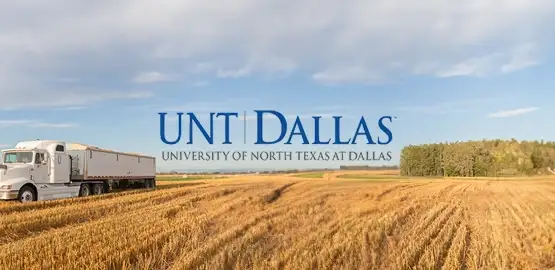

Agricultural supply chains in countries like China and India are fragmented, with small farms lacking network visibility, causing inefficiencies and reduced profitability. The University of North Texas tackled these challenges by cutting transportation costs, reducing food wastage, and increasing farmer profitability through advanced logistics and supply chain design.
The project integrated Geographic Information Systems (GIS) and satellite imagery to estimate crop yields across different regions, which were then mapped onto a grid system to calculate crop coverage and predict freight volumes. This information was fed into anyLogistix to model and optimize the agricultural supply network.
Agricultural supply chains present a unique set of challenges compared to traditional ones. As explained by an expert on logistics analysis—Professor Sugru Mitra, from the University of North Texas at Dallas—agricultural supply chains are highly fragmented and fraught with uncertainties. Logistics data analysis and the application of supply chain analytics use cases can help farmers and agricultural businesses address these complexities. This approach can improve the overall efficiency and resilience of the sector.
The complexity of agricultural supply chains is especially challenging in countries like China and India. Here, many small farms dominate the landscape. They often have little interest in how the whole supply chain works, lacking logistics data analysis, which causes inefficiencies and lowers profits.

A standard agricultural supply chain structure reviewed using logistics analysis
The situation is worsened by middlemen, such as brokers and wholesalers, who take a large share of the profits, leaving farmers with very little. Additionally, issues like unpredictable crop yields, fluctuating prices, and poor infrastructure for transporting and storing goods further complicate processes.
For instance, in India, the loss due to insufficient transportation and storage is estimated to be equivalent to the food consumption of the entire population of Australia.
— World Economic Forum
Intricate agricultural network organization (click to enlarge)
Applying practices presented in thriving supply chain analytics use cases can play a crucial role in addressing these challenges. They can help with optimization of the flow of goods, cost reduction, and food wastage minimization.
To turn this issue into a successful supply chain analytics use case, the University of North Texas focused on minimizing transportation costs, reducing food wastage, and maximizing farmers’ profits.
The project employed advanced logistics data analysis and modeling techniques, leveraging Geographic Information Systems (GIS) and satellite imagery to estimate crop production across different regions. This data was integrated with a grid system to calculate the area of crop coverage and predict the amount of agricultural freight generated in each section.
Examined information from the GIS database (click to enlarge)
Following the principles of logistics data analysis, the information collected using GIS was integrated into anyLogistix, a powerful tool with many examples of implementation in supply chain analytics use cases. To examine key aspects of the supply chain, the university conducted various optimization experiments, including:
In the next stage of the project, Greenfield analysis (GFA) was employed to identify optimal locations for new silos, which are critical for reducing transportation and inventory costs. Using logistics analysis, these new sites were strategically selected to enhance the overall efficiency of the supply chain.
Additionally, simulations were conducted to evaluate service levels and develop key performance indicators (KPIs) tailored specifically for the agricultural sector.
Dashboard of various KPIs in anyLogistix (click to enlarge)
These models aimed to unify the fragmented supply chain, providing greater transparency and coordination among the players involved. The project empowered farmers by enabling direct sales to manufacturers and processing plants, bypassing profit-draining intermediaries, and enhancing overall profitability.
The project showed the potential of applying logistics analysis in the agricultural sector. Following the best practices of other supply chain analytics use cases, the University of North Texas research achieved two important targets:
The project emphasized the importance of data consideration and the use of software to process it and provide results. With anyLogistix, the University of North Texas obtained data-supported agricultural KPIs through logistics analysis, providing a robust framework for measuring and improving service levels.
This case study was presented by Prof. Sugru Mitra from the University of North Texas at Dallas at the anyLogistix Conference 2024.
The slides are available as a PDF.
